
Most people know that you can visit Juliet’s balcony when you go to Verona, Italy. It’s hard to miss, really, it’s arched brick entrance just a block away from the bustling Piazza dell’Erbe. Always swarmed with tourists wanting to have their picture taken on the balcony itself or to rub Juliet’s right breast for “luck in love”, it’s also scorned as a fabricated attraction by the cynics among us. Whether or not you believe that the story of the star-crossed lovers is true, though, you have to admit it’s a compelling tale, as evidenced by its many retellings throughout the centuries – even before Shakespeare (read more about the history of “Romeo & Juliet” in this post).
Casa di Guilietta, Juliet’s House, isn’t the only place a fan of the tragic love story should visit while in Verona, though. The much less-known tomb of Romeo & his Juliet lies outside of the city walls on the grounds of a retired Franciscan monastery, as Shakespeare described it.
To enter the monastery grounds you first pass through a large outer courtyard with a path that leads up to the tall, grey stone wall, partially covered by ivy, that surrounds the property.
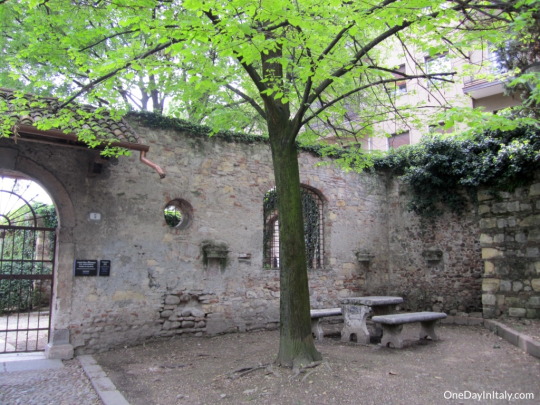
Shaded by tall trees, the courtyard is relatively bare except for a stone table and benches in the corner and a huge but delicate white statue to the side of the path. The couple depicted is the “Butterfly Couple”, Liang Shanbo and Zhu Yingtai – basically China’s “Romeo & Juliet”. Ill-fated lovers, one who begs the others grave to open up and consume her… which it does, and their souls turn into butterflies so they can fly away and live happily together forever after.

When I entered the monastery grounds, there was no one in sight. I walked around a bit looking for some sort of obvious entrance and when I finally found it, I was surprised to learn that the monastery is actually a museum, the Museo degli Affreschi (Fresco Museum). The first room, though, held statues.
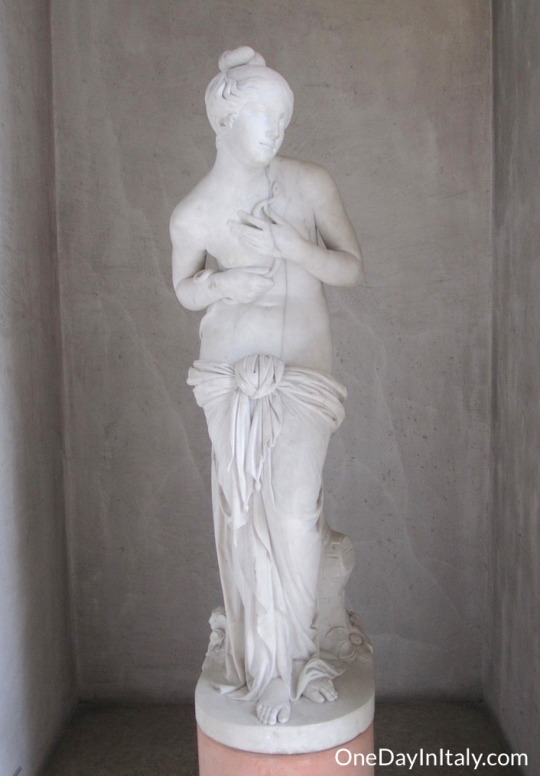
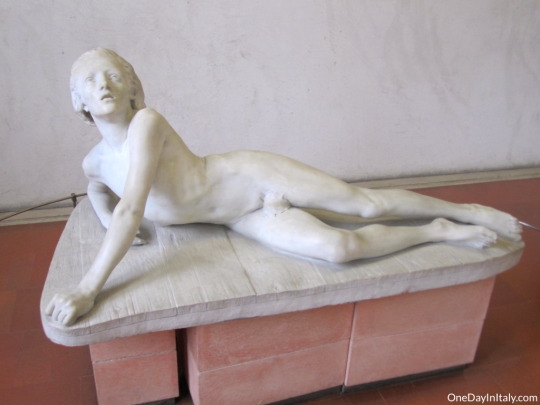
The other rooms showcased frescoes from the 16th-18th centuries. During that time Verona was the birthplace of so many frescoes that it became known as “Urbs Picta, or “Painted City” in Latin.
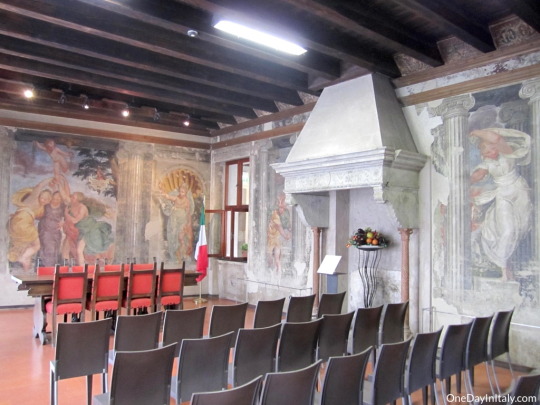
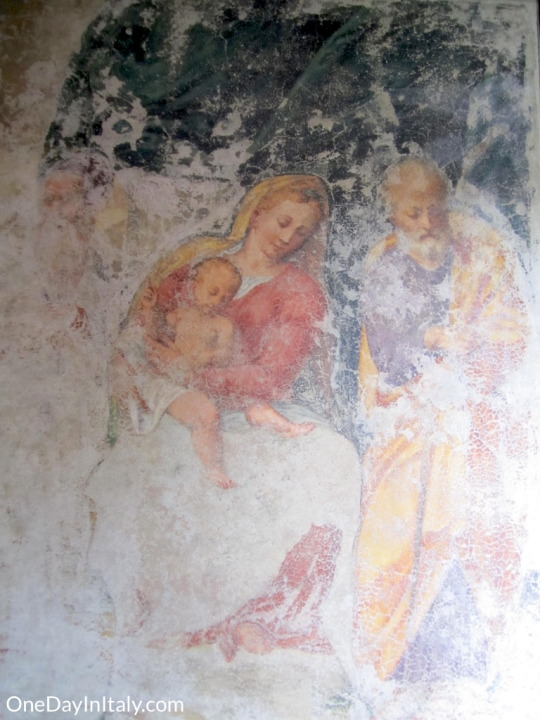
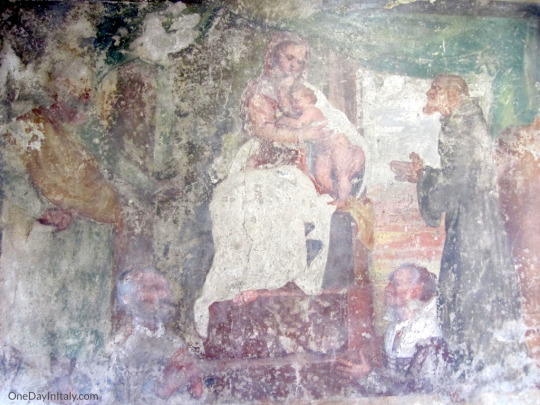
I hadn’t seen any signs pointing to Juliet’s tomb, so I continued to wander. I headed outside where a lovely courtyard, festooned with blooming wisteria, offered a peaceful respite. A wishing well stood in the center of four stone walkways and large trees shaded all four corners.
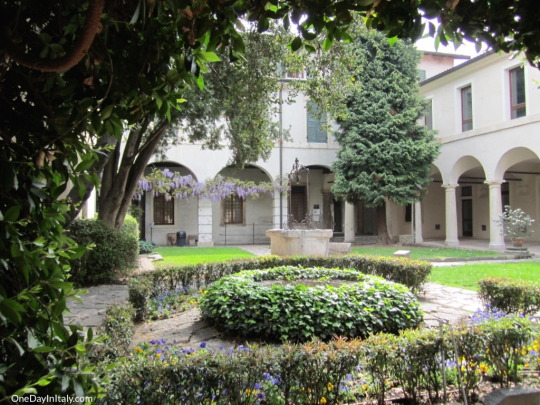
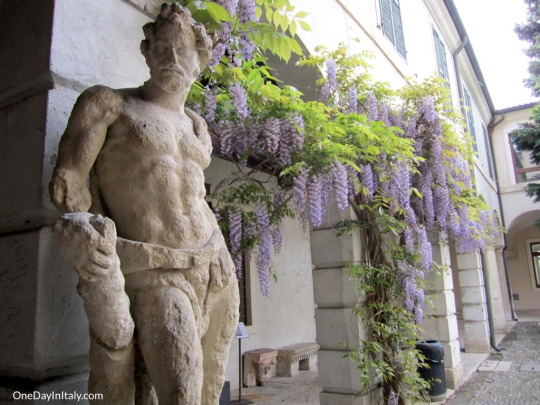
I walked around the edge, under the porticos, till I saw a slab of marble on the wall engraved with a familiar quote:
“A grave? O, no; a lantern…
For here lies Juliet, and her beauty makes
this vault a feasting presence full of light.”
This had to be the right place.
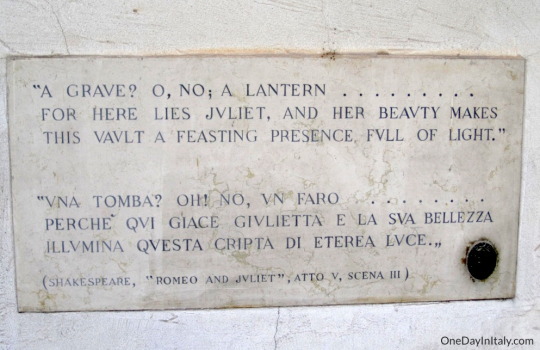
The tomb has an anteroom with walls absolutely covered in graffitied messages to Juliet with the standard “I was here” thrown in every once in a while. Through the brick arch to my right, though, I could see the open (empty) casket, light shining through a window to naturally illuminate it.
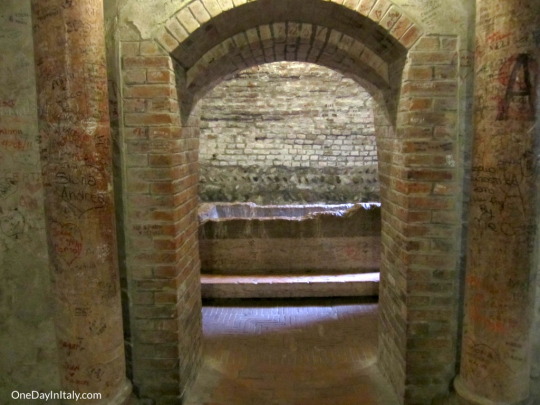
Now I know there are those who dismiss the story of Romeo & Juliet as complete fiction, but really we’re not sure how much of the story might be true. There were two families with those names (or the Italian versions of them, at least) in Verona around the time the story was supposed to have taken place. Verona was politically and harshly divided. And there was an oral tradition in Italy describing the star-crossed lovers centuries before Shakespeare ever wrote about them.
Local lore says that, even though suicides are traditionally not given a formal burial, the monastic authorities at the time took pity on Juliet and agreed to give her a simple burial without any heraldic bearings or inscriptions. As the tale became more popular in the 16th century and more attention was being paid to the truth of the legend, the church decided to hide their past transgression of the “illegal” burial by spreading the remains and destroying the cover of the casket, transforming it into a water vessel outside on the grounds.
Over the years many dignitaries and writers came looking for the tomb, some (like Lord Byron and Napoleon’s wife) even took pieces away with them. By 1842, though, when the monks abandoned the monastery, the tomb was forgotten. When the Congregation of Charity took over the monastery in 1868, they moved the casket and many other items under the porticos to clear space. It wasn’t until 1935 that city officials set the red marble casket in its present location, an apt tomb for the long-remembered Juliet.
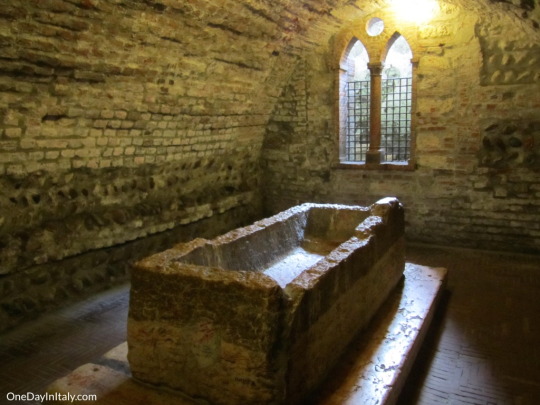
There are two lower rooms as well, holding a vast array of Roman amphorae, large jars with two handles and a long, thin neck.
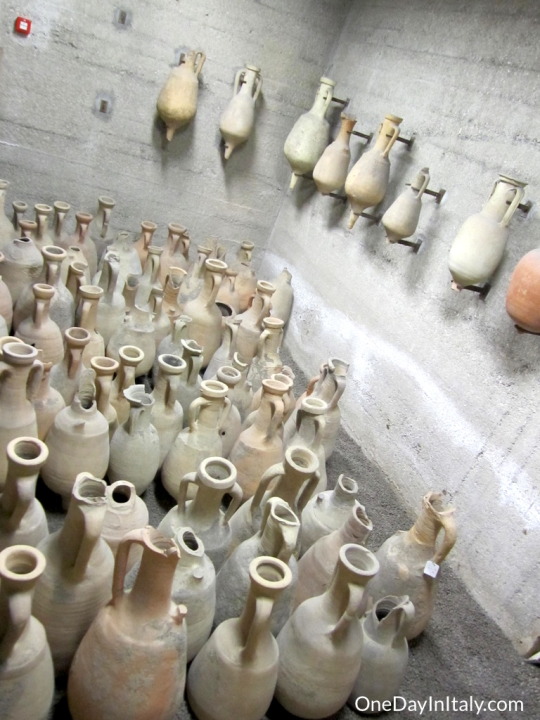
Address: Via del Pontiere, 35 – 37121 Verona.
Opening hours: Tuesday-Sunday 8,30-19,30 – Monday 13,45-19,30
Prices: Standard € 6.00 – Reduced € 4.50 (groups minimum 20 persons, students 14-30 years old and over 60) – € 1.00 (Schools and young people 8 – 13 years old ) – € 1.00 the 1st Sunday of the month for everyone (from January to May and from October to December) – Free entrance with the Verona Card.
Tel: 045 8000361
Comments
comments











Leave a Reply